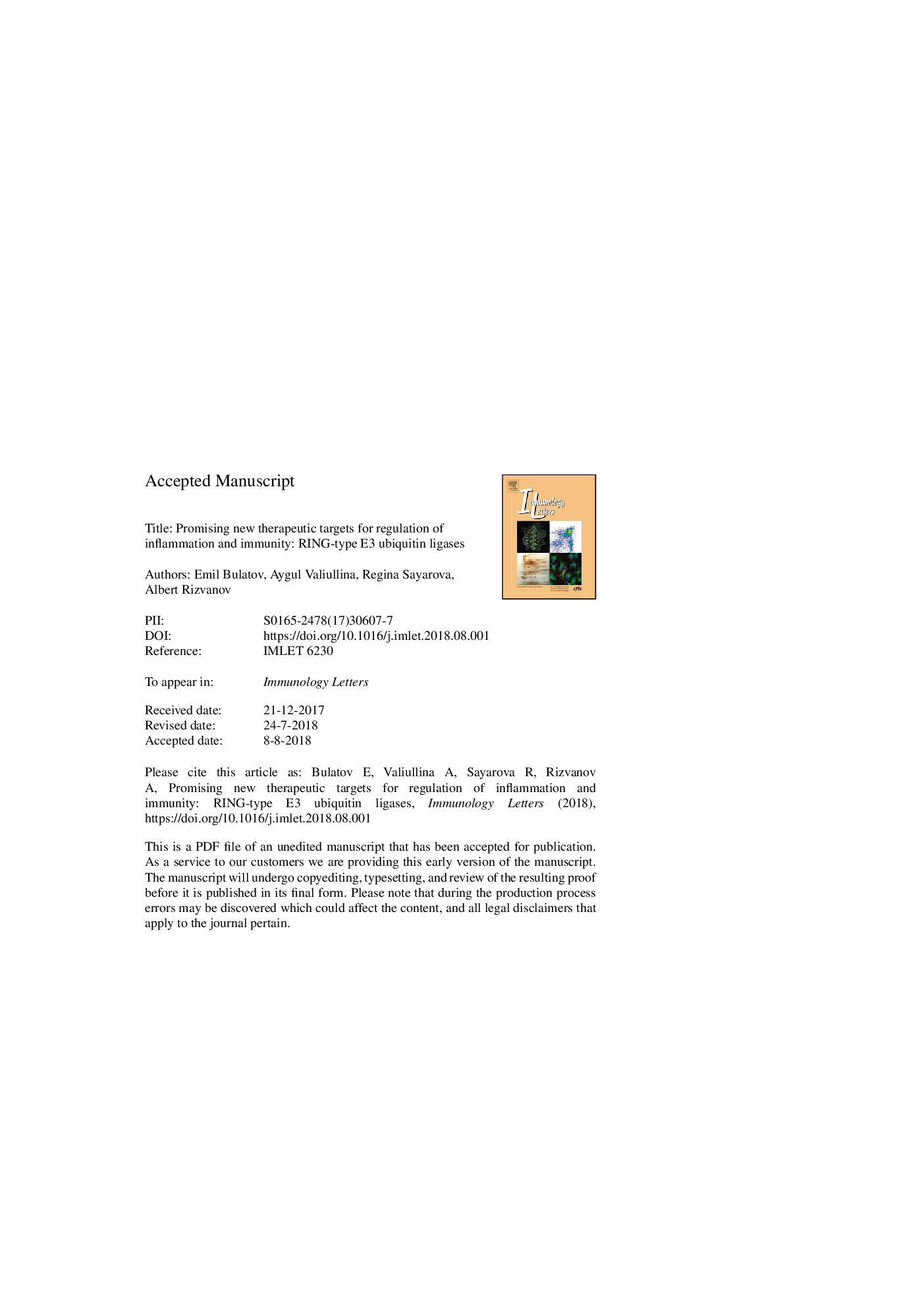| Article ID | Journal | Published Year | Pages | File Type |
|---|---|---|---|---|
| 8738283 | Immunology Letters | 2018 | 20 Pages |
Abstract
Ubiquitin-proteasome system (UPS) is a primary signaling pathway for regulation of protein turnover and removal of misfolded proteins in eukaryotic cells. Enzymes of the UPS pathway - E1 activating, E2 conjugating, E3 ligating - act together to covalently tag substrate proteins with a chain of ubiquitins, small regulatory proteins. The poly-ubiquitin chain then serves as a recognition motif for 26S proteasome to recognize and degrade the substrate. In recent years UPS has emerged as attractive enzymatic cascade for development of novel therapeutics against various human diseases. Building on the previous success of targeting this pathway in cancer - the broader scientific community is currently looking for ways to elucidate functions of E3 ligases, substrate-specific members of the UPS. RING-type E3 ubiquitin ligases, the largest class of E3s, represent prospective targets for small molecule modulation and their importance is reinforced by ever growing evidence of playing role in non-cancer diseases, primarily associated with inflammatory and immune disorders. In this review, we aim to briefly cover the current knowledge of biological functions of RING-type E3 ligases in inflammation and immunity.
Keywords
MAVSTGFPRRSCFCLRVHLNLRTABCRLIRFRIG-ITBKTAK1TAK1-binding proteinNF-κBRLRTRIMTRAFanaphase promoting complex/cyclosomeSkp2PROTACS-phase kinase-associated protein 2RBRNFATC2FANCTNFCullin RING ligaseFTDPBMCLPSPDCTCrERKIKKAPCAP-1TLRHIF-1αAPC/CIκB kinaseMAPKMdm2Rheumatoid arthritisantigen-presenting celltripartite motifinterferonIFNinterleukinALStransforming growth factorTANK-binding kinase 1Toll-like receptorRingmurine double minute 2Peripheral blood mononuclear cellPlasmacytoid dendritic cellhypoxia-inducible factor 1 alphaInterferon-regulatory factortumor necrosis factor receptor-associated factortumor necrosis factorfrontotemporal dementiaSystemic lupus erythematosusSLElipopolysaccharidemajor histocompatibility complexMHCMultiple sclerosisGRAILmitochondrial antiviral signaling proteinactivator protein 1mitogen-activated protein kinaseretinoic acid-inducible gene-Ireally interesting new geneNod-like receptorRIG-I-like receptorT cell receptorpattern recognition receptortumor necrosis factor receptor 2C-type lectin receptor
Related Topics
Life Sciences
Immunology and Microbiology
Immunology
Authors
Emil Bulatov, Aygul Valiullina, Regina Sayarova, Albert Rizvanov,
